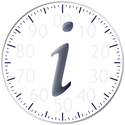AAT ICAS 2024 ✧ overview of SI usage guidelines
this document provides a general overview of the International System of Units and is not intended as a specification or reference of SI. for references and detailed specifications of SI, please see AAT ICAS 2076.
- usage of unit symbols
- usage of SI prefixes
- table 2024.1 ✧ prefix form expressions of monetary units
- format conventions for currency units
- usage of numerical expressions
- proper expressions
- table 2024.2 ✧ examples of usage of symbols and abbreviations
usage of unit symbols
unit symbols are the same form for both singular and plural and are generally lowercased. if however a unit name is derived from a proper name, then the initial letter of symbol is capitalized. unit symbols are always represented with roman (upright) text, regardless of the surrounding text. periods are not used with symbols except as sentence punctuation.
algebraic expressions are expressed by standard forms:
- 1) half-high dots or spaces are used to express a unit derived by multiplication of other units. example: N ⋅ m or N m.
- 2) a solidus, horizontal stroke, or a negative exponent is used to express a unit derived by division of other units. example: m/s or [m over horizontal bar over s] or m ⋅ s-1.
- 3) avoid improper expressions of multiple operators via the appropriate use of parentheses or negative exponents. example: m ⋅ kg/(s3 ⋅ A) or m ⋅ kg ⋅ s-3 ⋅ A-1.
usage of SI prefixes
usage of SI prefixes requires that a unit be referenced for any prefix expression, and that prefixes not be compounded with other prefixes. SI prefixes are moreover sensitive to capitalization and lowercasing. SI prefixes are not used with traditional scales of time except for certain fixed implementations of the second. an ICAS set of metric prefixes that includes the prefixes specified in SI is specified in AAT ICAS 3130.
quantity terms 'million', 'billion', and 'trillion' are not defined in relation to SI (see also USMA: 25720 reference via AAT ICAS 2076). these terms have different customary meanings in different regions. for example the term 'billion' means a 'thousand million' in American usage, yet means a 'million million' in British usage. consequently, usage of the terms 'million', 'billion', and 'trillion' is discouraged in favor of the following preferred usage alternatives. International-form English alternatives for expressing quantities include the use of SI prefix terms or the use of numerical expressions. precedents for the use of SI prefixes as an alternative for customary terms have already been established in the UK and USA. although spoken expressions of unitary quantities often omit naming the unit (for example, saying '100 K' for $100 000); written expressions should reference a particular unit.
an ICAS specification of an indefinite reference unit designates the use of metric prefixes for other non-scalar practical units not otherwise designated as metric units, as non-reference units, or as non-decimal units; especially for the purpose of designating an alternative to the use of customary terms such as 'million' and 'billion' that may have different customary meanings in different regions. Examples of practical units include reference monetary units (megadollars, megafrancs, megapounds, and so on.); web site visitors or hits (kilovisits, megahits, and so on.); and so on.
for purposes of expressing quantities in terms of an indefinite reference unit, one should select appropriate units that are practicably referential in nature, that are relatively coherent, and that can be expressed with decimals without requiring cumbersome conversions from non-decimal fractions. for example, one might choose 'megadollars' or 'megacoins' as an indefinite reference expression in place of 'megapennies', 'meganickels', or 'megadimes'. please note that minutes, hours, and days are excluded from expression as indefinite reference units by both SI and ICAS standards. expressions of the SI unit for time (second) are specified in SI. expressions of the ICAS unit for time (chron) are specified in ICAS.
table 2024.1 ✧ prefix form expressions of monetary units
| symbol | long |
|---|---|
| 1 K$ | 1 kilodollar |
| 1 M$ | 1 megadollar |
| 1 G$ | 1 gigadollar |
| 1 T$ | 1 teradollar |
format conventions for currency units
users should be aware of different format conventions for expressing currency units for an amount value. words, initialisms, and symbols are used to designate monetary or currency values. for example, the word 'dollar', the abbreviation 'USD', and the symbol '$' are conventionally used to designate currency values.
in writing it is customary to place the currency unit before the amount. when deciding to place a currency unit or symbol before or after an amount, be sure that the currency unit and amount are expressed clearly for the purpose of the expression. for example $1.00, $1.00 USD, and USD $1.00 are all possible expressions. the expression $1.00 implies that the specific dollar unit (that is, CAD or USD, and so on) is understood. the format of unit before figure is consistent with expressing a calendar era before a year value, with the effect that the unit is immediately established for a figure value.
in speech it is conventional to say the amount and then the currency unit (for example, $10 is spoken 'ten dollars' rather than 'dollars ten'). the format of figure followed by unit is also consistent with conventions for expressing other types of units including metric units.
the use of possible different format conventions for different purposes (writing, speech, tabulation) can affect how readers cue expressions. readers might look for formats to indicate the beginning or the ending of a unit expression. users should also be aware that decimal place indicators vary by region. regardless of the particular format used, be sure that it is expressed clearly and consistently (for example, is $1.00 distinguishable from $100) for a reader. a common convention for designating the beginning or end of a currency expression (for example, a character or symbol to be written to the left of a monetary expression, or a special format such as bold or italic) remains under consideration.
usage of numerical expressions
numerical expressions of quantities should be expressed with arabic numerals, not as words; and should moreover reference a unit symbol. a word space is used between a number and symbol. numbers between 0.1 and 1000 are appropriate for the expression of quanities of SI units. in numerical expressions of mathematical quantities, use word 'to' rather than a dash for a numerical range to avoid confusion with minus sign.
proper expressions
avoid mixing the use of unit names and symbols within an expression. do not use abbreviations for units, use the designated symbol: for example, use 's' not 'sec' for second. also do not express other information about a quantity with a unit symbol, but with regard to the quantity itself.
unit conversions should be represented to significant units appropriate for the precision of the initial and target scales.
table 2024.2 ✧ examples of usage of symbols and abbreviations
| proper | incorrect |
|---|---|
| "i went to see the doctor today." | NOT "i went to see the Dr. today." |
| "the value of the dollar has declined." | NOT "the value of the $ has declined." |
| "there are palm trees at the Florida border." | NOT "there are palm trees at the FL border." |
| "he continued down the street." | NOT "he cont'd down the street." (or worse yet "he cont'd dn the st.") |
| "this is a kilogram scale." | NOT "this is a kg scale." |
| "how many millimetres long is that." | NOT "how many mm long is that." |
| "volts are the units of electric potential." | NOT "V are the units of electric potential." |
| "the satellite's altitude is hundreds of kilometres." | NOT "the satellite's altitude is hundreds of km." (or worse yet, "the satellite's alt. is 100's of km.") |
| following are acceptable uses of symbols and abbreviations referenced above: | |
| "good morning, Dr. Becker." (title as part of a name) | |
| "that costs $25." (dollar sign used with numbers) | |
| "this part is 45 mm long." (millimetre symbol used with numbers) | |
| "he lives in Miami, FL." (state abbreviation used as part of an address) | |
| "... and the police said the driver was not at fault, but they had to (cont'd pg. 5)" [pagination cue] | |
| "there were 10 kg of potatoes in that sack." (kilogram symbol used with numbers) | |
| "the potential between the poles of that motor is 12 V too high." (volt symbol used with numbers) | |
| "the satellite's altitude is 250 km or perhaps more." (kilometre symbol used with numbers) | |
| examples adapted with permission from message by Bill Hooper appearing in Metrication Matters 12 (AAT ICAS 2076) | |
aatideas.org document updated:
| scale | value | ||
|---|---|---|---|
| UCN | 12019 S19 Yellow | ||
| zone(UT) | t339 tt050 | ||
| 'ICAS in use' can accommodate calendar and clock formatting 'for all people, for all time'. | |||
| AD common year day | 139 | ||
| G | 2019 May 19 Sunday | ||
| UT | 08:08:14 | ||
| style legend | |||
mission, terms of use, privacy, e quality guarantee, search, contact AAT.









